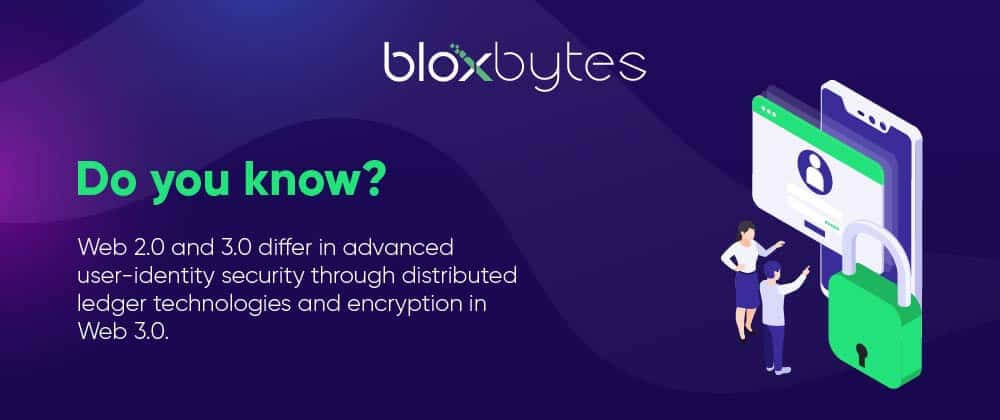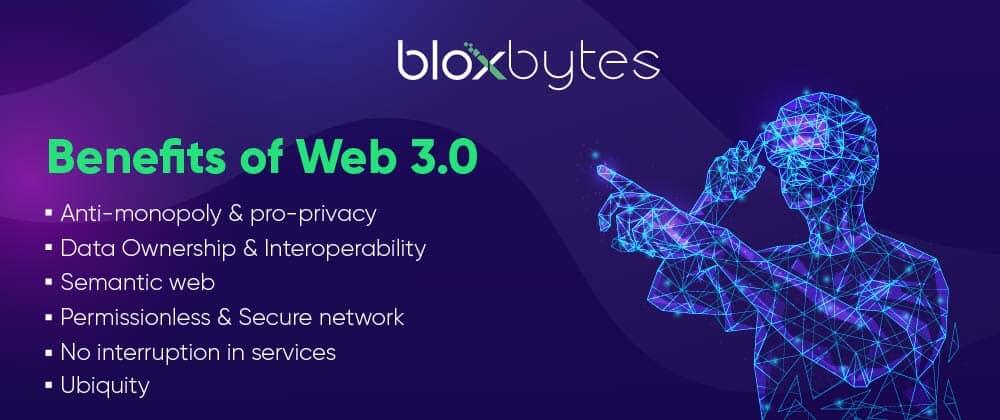
Introduction
Blockchain & Web3 Services Trusted By Leaders
- Develop innovative solutions using our state-of-the-art blockchain expertise.
- Achieve accelerated growth with robust & scalable Web3 consulting.
- Unlock 360-degree security with our top-rated blockchain development.
Web 3.0 explained: how it will transform businesses in 2023
The internet has undergone tremendous transformation since its inception, from the dot com to the release of social platforms like Facebook. Now, we are on the threshold of a technological revolution. But what does this new paradigm mean for businesses? This blog will delineate the evolution, features, and benefits of Web 3.0 and current business models;Web 3.0 explained: Evolution of the Web
I would like to take you back in time to the early days of the web. Web 1.0, where users could access data anywhere worldwide through static web pages served from servers’ file systems. Unfortunately, Web 1.0 lacked functionality for interacting with content. Therefore, Web 2.0 became prominent, the second generation of the Internet. It focuses on enabling users’ interactions with content on the web. It has made the growth of user-generated content possible, as well as interoperability and usability for end users. Furthermore, Web 2.0 does not modify technical specifications. Instead, it aims to change the design of web pages and their usage. Moreover, Web 2.0 platforms such as social media and peer-to-peer exchanges facilitated the exchange of goods between users, which increased eCommerce sales. It’s time for a change. Web 3.0, or the semantic web, is an improvement over Web 2.0 with significant transformations in terms of infrastructure and metadata! The metadata system is a way to structure and organize all data types that humans and machines can read. One of the main advantages associated with Web 3.0, it builds upon many Web 2.0 features but takes them to new heights! Web 3.0 has no central authority, making all forms of information universally accessible as it is open-source.Features of Web 3.0
Let’s list all the features of Web3 below:1. Semantic web
The semantic web is a data structure that allows computers to understand human language. The goal of the semantic web is to make data more easily accessible, which will increase sales and provide opportunities for machine learning and AI. Web 3.0 can support semantic computing. To find, share and analyze information online, humans must understand the meaning and communication of words.2. Artificial intelligence
Artificial Intelligence can process information similarly to humans. AI platforms can better satisfy user needs through continuous learning. Using artificial intelligence, Web 3.0 offers faster results and real-time insights into customer behavior, which has changed how businesses interact with customers.3. 3D Capabilities
Web 3.0 enables users to take advantage of three-dimensional visuals and graphics. In addition. web 3.0 designers already use three-dimensional design for many applications, including computer games, e-commerce sites, and mapping programs.4. Ubiquitous
In a decentralized Web 3.0 environment, content is accessible by multiple applications on all devices, and the associated services are available everywhere.5. Enhanced security
You can also find enhanced security and privacy in Web 3.0.
Read More: What is Web3? How Does It Represent the Future of the Internet?
Business examples in Web 3.0
The potential of Web 3.0 to disrupt the status quo is undeniable, even though we have only just begun exploring its possibilities.1. Revenue Share
The most common approach is revenue share. Decentralized applications often host a token economy through a native token or one that runs on top of another platform. Some projects also accept other cryptocurrencies as payment for services rendered. The revenue share model can help companies grow by enabling them to hire different kinds of people who are more suited for particular jobs.2. Percentage Fee
The percentage fee model is similar to revenue share, but it focuses on the use of a platform rather than the sale of products or services. The percentage fee model works well for platforms that provide recurring services or access to data. For example, companies like Uber and Airbnb charge a percentage of each transaction made between users. In other words, this model is to take a percentage of each sale that occurs on your platform. It’s popular with exchanges and marketplaces because sellers benefit from completing a sale through the exchange.3. Income Share
In the context of Web3, users could share earnings from another entity. An offline example would be a restaurant where the cashier splits tips with everyone else working there but doing so in a low-transaction cost way on the blockchain is new.4. ICOs
An initial coin offering is a process of selling tokens or coins all at once or over some period. A company can use several ICO models to raise funds.An example of web3 real use-case:
Web 3.0 and gaming
Web3 offers industries endless opportunities, from streamlining business processes to revolutionizing how people purchase goods. Let’s have a look at the use cases that this technology allows in the domain of gaming:1. Blockchain Games
Games using blockchain technology are the first practical use case, creating individualized economies where individuals own objects. If you want to integrate blockchain into your existing games, BloxBytes can be your ticket to success.2. Decentralised Autonomous Organisation
There is no central authority to guide a DAO; its members govern it. DAOs, which adhere to the blockchain philosophy of empowering its community members, give voting rights to their constituents. These voting rights prioritize people’s interests over influential individuals and groups and form a crucial governance system in the gaming ecosystem of web3.3. Decentralised Finance
The Web3 platform facilitates the implementation of ideas through a decentralized financial system called DeFi. In the web3 ecosystem, the financial layer allows for a democratic financial system without any central authority, ensuring that no one can manipulate rules. BloxBytes is the leading Web3 development company specializing in DeFi, Game-Fi, and Meta-Fi.4. Metaverse
The metaverse is an immersive, shared, and interactive virtual world, one of the most critical use cases for web3. The value the principles of Web3 provide is well suited to apply within this environment.Web 3.0 and healthcare
The web3 ecosystem offers several solutions to the problems facing healthcare. The healthcare industry needs a digital transformation that can provide patients with transparency, security, and control over their data. As such, blockchain technology can help secure it against breaches and improve how medical data is shared between hospitals and other healthcare providers.1. Patient-owned electronic health records (EHRs):
Sensitive data spread across distributed ledgers remain immutable, private, and secure.2. Patient self-management:
The further development of personal healthcare apps and wearable technology is improving patient self-management. This brings numerous benefits for both patients and the healthcare system as a whole.3. Electronic health records:
Web 3.0 improves access to health-related information and allows for the better organization of Electronic Health Records (EHRs), which can be used by experts as well as non-experts alike in case of emergencies or other situations that require quick insight into a patient’s treatment history.4. Verification:
The health records are verifiable and can be confirmed at the source. They can also be verified efficiently through decentralized finance tools.